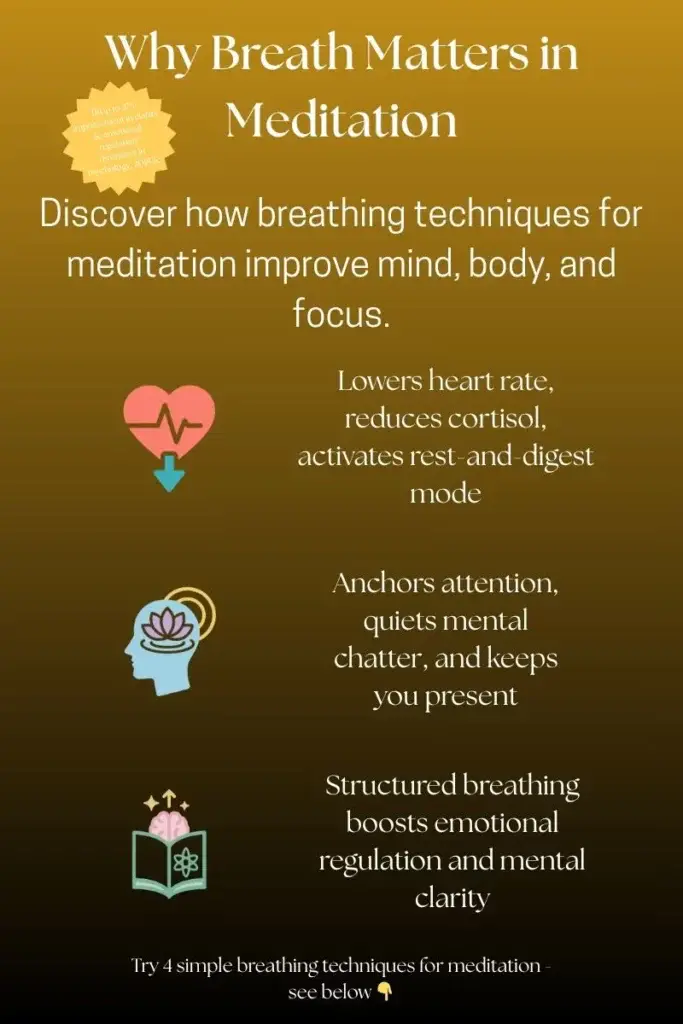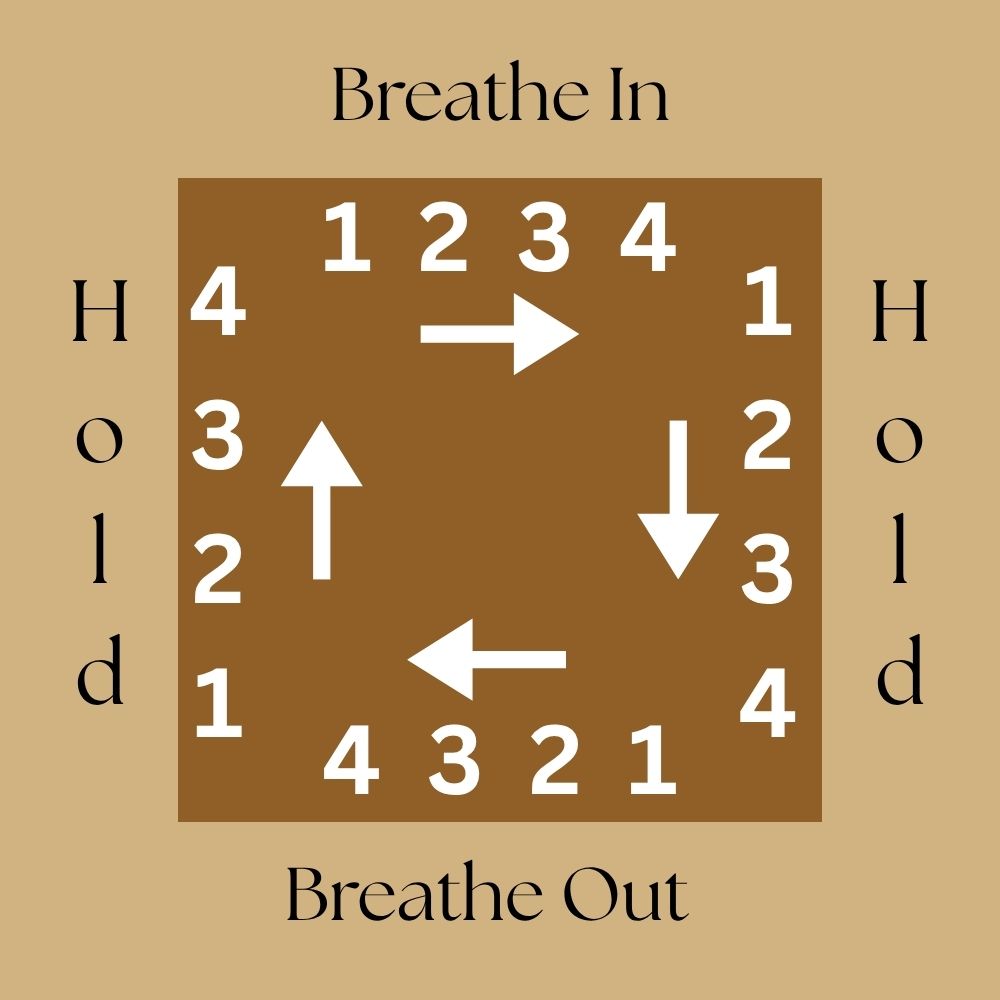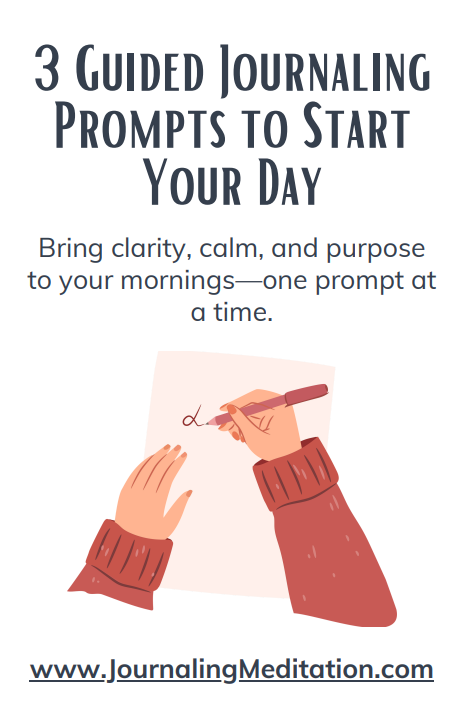
Breathing is the anchor of meditation. Without proper breathwork, it’s easy for the mind to wander and thoughts to take over. The good news is you can transform your practice with just a few breathing techniques for meditation that calm your nervous system, sharpen focus, and even deepen relaxation.
Why Breath Matters in Meditation

Your breath is more than just a means to life. It’s also a powerful tool for managing stress and finding presence:
- Physiological effects: Controlled breathing lowers heart rate, reduces cortisol levels, and helps shift from fight-or-flight to rest-and-digest mode.
- Mind-body connection: Focusing on breathing anchors your attention, quiets mental chatter, and brings you into the present moment.
- Science-backed benefits: A study in Frontiers in Psychology (2018) found that structured breathing exercises significantly improve emotional regulation and mental clarity.
For additional meditation techniques that pair beautifully with breathwork, check out 9 Easy Meditation Exercises for Beginners.
4 Simple Breathing Techniques for Meditation
1. Diaphragmatic (Belly) Breathing
- How to do it: Sit comfortably, place one hand on your belly, and inhale deeply through your nose. Feel your belly expand, then simply exhale slowly through your mouth.
- Benefits: Activates your parasympathetic nervous system, promoting relaxation and reducing stress.
2. Box Breathing (4-4-4-4 Technique)
- How to do it: Inhale for 4 counts – Hold for 4 – Exhale for 4 – Hold for 4, then repeat.
- Benefits: Used by Navy SEALs to stay calm under pressure. Helps quiet racing thoughts and boost focus.

3. Alternate Nostril Breathing (Nadi Shodhana)
- How to do it: Close your right nostril, inhale through your left; switch nostrils and exhale. Continue alternating.
- Benefits: Balances energy, clears mental fog, and enhances overall concentration during meditation.
4. 4-7-8 Breathing for Deep Relaxation
- How to do it: Inhale for 4 counts – Hold for 7 – Exhale for 8.
- Benefits: A natural sedative for the nervous system, perfect for evening meditations or winding down for bed time.
How to Integrate Breathing Techniques Into Daily Meditation
- Begin your practice with 2 minutes of focused breathing before your regular meditation.
- Rotate techniques depending on how you feel. Use Box Breathing for stress, 4-7-8 for relaxation.
- Journal after sessions to keep track of which techniques feel most effective. (You can also see how journaling boosts your meditation journey for guidance).
Common Mistakes and How to Avoid Them
- Forcing deep breaths: This can cause dizziness; always breathe naturally and comfortably.
- Holding breath too long: Build tolerance gradually to avoid discomfort.
- Skipping the settling phase: Start each session with at least a few calm breaths before just going into structured techniques.
Bonus: Guided Breathing Resource
Want a little extra guidance? Try these free Breathing Exercises for Anxiety from Healthline. They’re perfect for beginners and can easily be integrated with your meditation practice.
❓FAQ Section
Breathing techniques can actually be a source of confusion beginners. Here are answers to some common questions about how to breathe properly while meditating.
❓ Which breathing technique is best for meditation?
There’s no one-size-fits-all technique. Beginners often start with diaphragmatic breathing for relaxation. Box breathing and alternate nostril breathing are great for focus, while 4-7-8 breathing helps with deep relaxation.
❓ How do I breathe properly while meditating?
Breathe naturally in through your nose and out through the mouth, keeping your shoulders relaxed. Focus on slow, steady breaths. Avoid forcing deep inhales or holding your breath too long.
❓ What is the 4-7-8 breathing method?
It’s a calming breathwork pattern: inhale for 4 counts, hold for 7 counts, and exhale for 8 counts. It’s known for reducing anxiety and helping with sleep.
Mastering just one or two breathing techniques can completely change the way you meditate. Breathing with intention helps quiet the mind, relax the body, and open the door to deeper mindfulness.
Try one of these techniques today and see how your meditation feels. Which breathing style works best for you? Share your experience in the comments. I’d love to hear what resonates with your practice.





